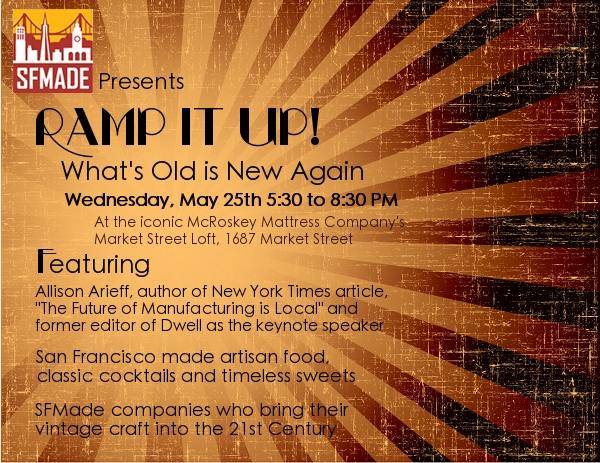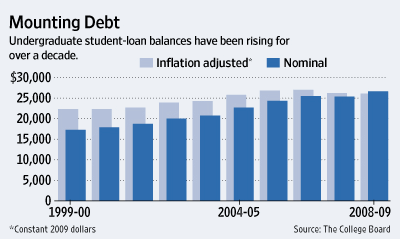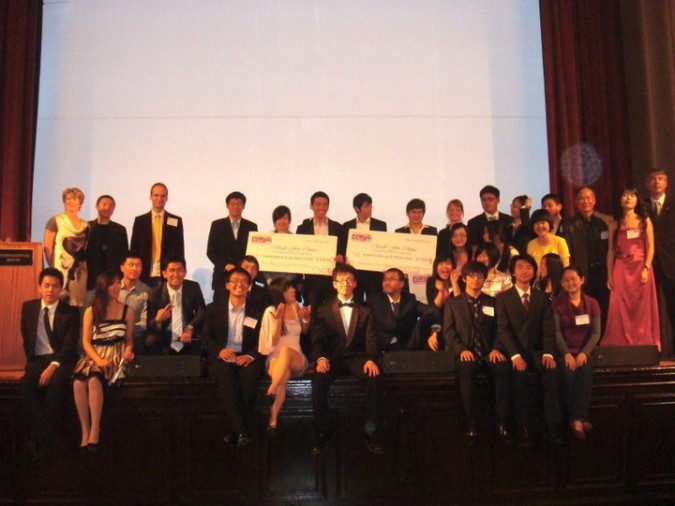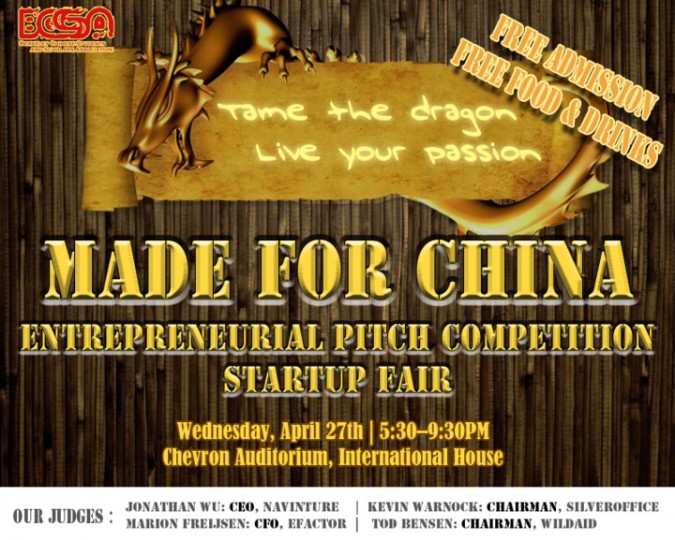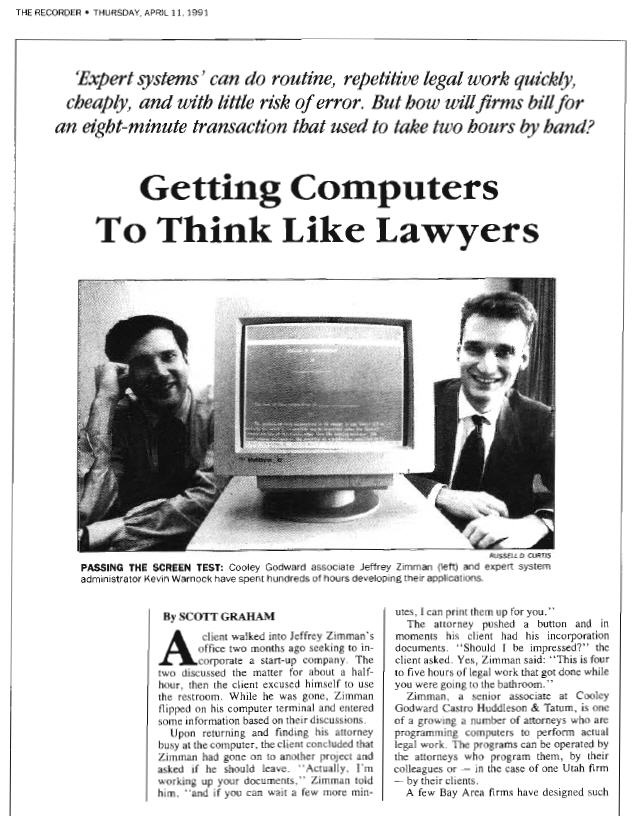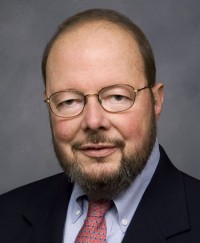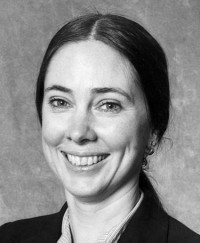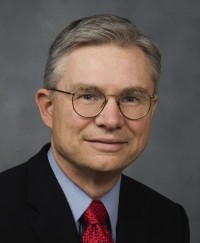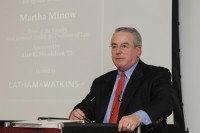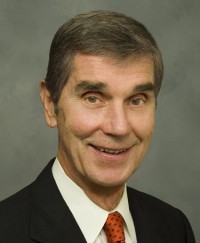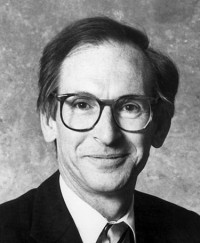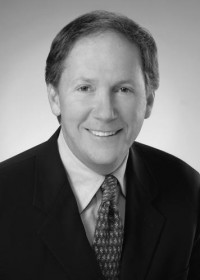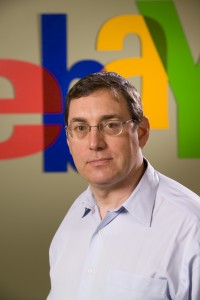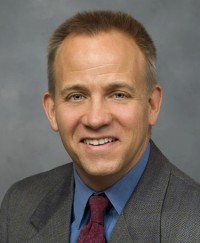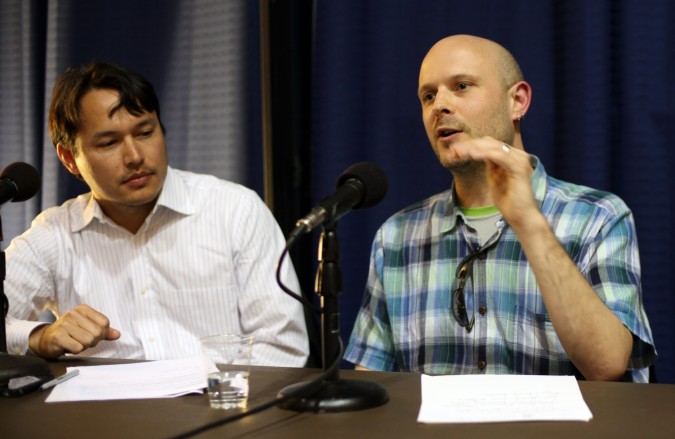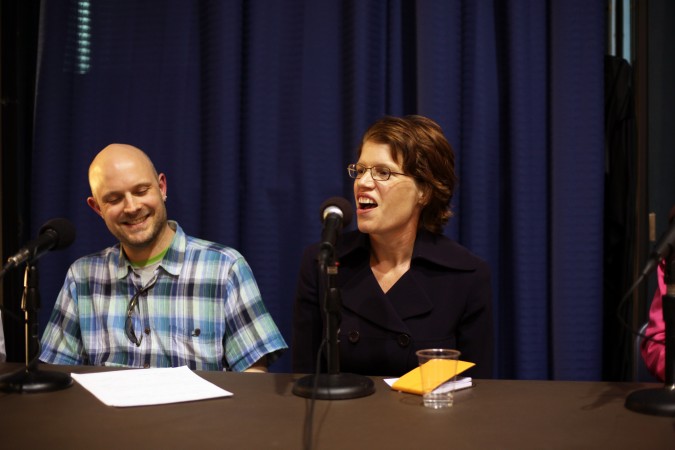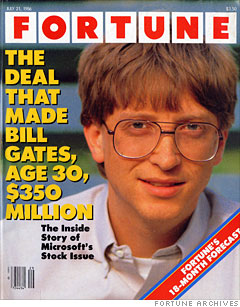Archive for the ‘Work’ Category
I’m attending Ramp It Up, a fundraiser by SFMade.org
I’m considering manufacturing self contained green homes in San Francisco, California. I don’t know much about the manufacturing business, and I have few contacts in the industry. To help fix that, I’m going to the first SFMade annual fund raiser tonight.
SFMade is a new trade organization that formed to promote the interests of companies that manufacture physical goods in San Francisco.
I first wrote about SFMade on Feburary 28, 2011.
Here’s the link to the event page for this SFMade event, titled Ramp It Up.
The ticket price is USD $45.00, of which USD $25.00 is tax deductible under US tax laws.
Money lessons for everyone
I read Money Lessons for Every High-School Graduate by Zac Bissonnette in today’s Wall Street Journal newspaper. Bissonnette’s piece is one of the most direct and sensible articles about money I’ve yet read.
While the lessons of this article are aimed at recent high school graduates, I think the lessons have yet to be learned by many people.
Lesson number four particularly resonates with me:
“Materialism is misery: Lives of thrift and conscientiousness lead to less stress, greater enjoyment of the things we do have and a lighter carbon footprint. But most of our societal associations with wealth are deeply connected with materialism: luxury goods, power and status.
“The more materialistic values are at the center of our lives, the more our quality of life is diminished,” says Knox College psychologist Tim Kasser, author of “The High Price of Materialism.”
Recognize the real benefits of wealth — freedom and flexibility — and don’t let the pursuit of its illusory trappings interfere with your ability to reap those rewards.”
Thanks to my generous relatives, rental and investment income, I have the freedom and flexibility the passage refers to.
That makes me richer than almost everyone I know, in my mind.
Even better, I am happy. I like my house, car and possessions, and I rarely dream of upgrading them.
Might I appreciate a gilded existence? Perhaps, but perhaps not, because with material riches come pressures that I have seen make many people unhappy.
I’ll take my happy, freedom filled middle class life over an unhappy, constrained upper class life… with joy.
I am confident I’ll make a lot more money, but happiness is more important than money.
4. Materialism is misery: Lives of thrift and conscientiousness lead to less stress, greater enjoyment of the things we do have and a lighter carbon footprint. But most of our societal associations with wealth are deeply connected with materialism: luxury goods, power and status.
“The more materialistic values are at the center of our lives, the more our quality of life is diminished,” says Knox College psychologist Tim Kasser, author of “The High Price of Materialism.”
Recognize the real benefits of wealth — freedom and flexibility — and don’t let the pursuit of its illusory trappings interfere with your ability to reap those rewards.
Stealing hair for money
Here’s an article entitled ‘Costly Hairstyle Is a Beauty Trend That Draws Thieves’ Notice’ about the crime of stealing human hair. I had no idea thieves stole hair on an epic scale until I read this article. The salon owner pictured below had $150,000 worth of hair stolen from her business during one such theft. Thankfully, the thieves are not taking the hair directly from its source.
EFactor – The largest network for entrepreneurs

I had never heard of EFactor until recently. It’s the largest [social] network for entrepreneurs in the world, according to the EFactor website.
I learned about EFactor from one of its cofounders, Marion Freijsen.
We were both final round judges for the Made for China Entrepreneurial Pitch Competition presented by Berkeley Chinese Students and Scholars Association. This event took place April 27, 2011 at International House in Berkeley, California. EFactor wrote a nice story about the pitch competition.
Freijsen invited me to see their extremely cool office at the cable car turnaround on Market Street in San Francisco, California. You can see Freijsen in the picture above. She’s the first person in the upper left. I’m the third person in the top row, from the left.
The EFactor office is in the Flood Building, a grand and important 100+ year old office building in San Francisco. What makes their office cool though is that it’s circular, as it’s in the front round part of the building you see when you’re standing at the cable car turntable and look up. I have seen this facade hundreds of times, but never before have I been inside one of those round offices.
Sadly, I’m still mostly unfamiliar with EFactor, as I devoted too much of my time with Freijsen talking her ears off about my plans to improve the human condition with my efficient housing, energy, food and finance ideas. Next time I see her, I’ll insist she do all the talking.
How to get a real education, by Scott Adams, the creator of Dilbert
How to Get a Real Education by Dilbert cartoon creator Scott Adams advocates teaching entrepreneurship to most college students.
I saw Adams speak at UC Berkeley years ago, and he packed the Anderson Auditorium with more people than I’ve ever seen there before. Scott Adams is a great speaker, and he had some entertaining stories, such as how he got to be an engineer at Pacific Bell. It turned out Pacific Bell had a budget for a certain number of engineers, but they would lose that budget if they didn’t have all the spots filled. So, to avoid losing the budgeted funds, they promoted Adams to ‘Engineer’ even though he was not trained or schooled as an engineer.
Adams also told the story of how he became a big time cartoonist. He sent samples of his work to many publishers, but didn’t hear from anyone who wanted to sign him until a year later, when United Media, a company he wasn’t familiar with by memory, called him and said they had finally reviewed his submission and wanted to offer him a contract. He said he actually asked them to list some of the other comics they published to familiarize him with who this company was. The response was: we syndicate Peanuts and Garfield. Adams first contract was with the largest and best know cartoon syndication company in the United States.
How to Get a Real Education, published April 9, 2011 in The Wall Street Journal, is worth reading, and I recommend it very much. One of the stories he tells is how he persuaded college administrators to allow him and his friends to take over running the dorm where he lived. They were successful, so he got a free room to live in and got paid. When I read this account, it made me think of my plan to put elementary, middle school and high school students to work staffing the school lunch programs at their schools, which I wrote about here on April 9, 2011.
It was 20 years ago today that I got my picture in The Recorder while I worked at Cooley LLP
Twenty years ago today I was working on Cooley LLP’s document assembly software development effort.
On this day April 11th in 1991, the project was featured in a lengthy article in The Recorder, a San Francisco newspaper for the legal profession. Here’s the PDF scan I made from the paper copy of the article I’ve saved for the last two decades: Getting Computers To Think Like Lawyers – The Recorder – April 11, 1991.
That was a big day for me, as non lawyers at law firms almost never receive any attention from the press. It was also a big day for my project because Kenn Guernsey, Cooley’s Managing Partner at the time, left Jeff Zimman and me a nice voicemail congratulating us for our work. Zimman was the attorney that got the project off the ground by personally programming Cooley’s first document set, and without him, I wouldn’t have likely started Hotpaper.com, Inc. or later created the first online office suite, gOffice. Hotpaper was the first online document assembly application. The application was live on the Internet in 1997, two years before I changed the name of the company from Document Automation Systems LLC to Hotpaper.com, Inc. I licensed this online document assembly software to 30 of the Fortune 500, which I was proud of given my company at the time consisted of just me.
I run into Zimman on the San Francisco MUNI every year or so. He made partner at Cooley in six years I believe, and later became an investment banker at Lazard Ltd. Now he is Chair of Posit Science, which makes computer software that helps improve mental functions. It’s really interesting to me that we both became entrepreneurs after our stints at Cooley.
I credit Cooley with teaching me to be an entrepreneur, because starting such an innovative project inside a law firm is VERY difficult. The computer department isn’t normally charged with embedding the expertise of lawyers into software, so they don’t really know the lawyers. I got to know the lawyers because I needed to get the software to mimic lawyers. I spent a lot of energy hounding the lawyers with questions that must have seemed so simple to them. Zimman was a quick learner, and didn’t need much of my help to build the document models. But Zimman had to return to his lawyer duties after creating a few sets of documents, so I had to personally recruit new lawyers to get involved. I got help from some of the top lawyers at the firm at the time, including Hank Barry, who would later testify before the United States Senate when he was the Interim CEO at Napster.com at the height of its notoriety. Alan Mendelson, Paul Renne, Tony Gilbert, Lee Benton, Dan Frank and Susan Philpot were also instrumental to getting the project as far along as we did. I couldn’t find Dan Frank on the Cooley website so I’m not sure where he works now.
Perhaps the most actively helpful contributor to answering my many legal questions was Eric Jensen. He was a young hotshot associate at the time. I think Eric started at Cooley in 1988. I started at Cooley in 1989. Jensen would return my phone calls in 30 minutes. This was astonishing, as he was working like crazy in Cooley’s Sand Hill Road office with super lawyers Mark Tanoury and Craig Dauchy. Other lawyers that answered my questions, like Michael Jacobson, would often take days or weeks to return my calls, but Jensen usually got back to me in 30 minutes. We became good friends, and I fondly recall working with him. I would even go to the Sand Hill Road office on occasion to meet in person with Jensen. Jacobson was an outstanding question answerer by the way, and he went on to strike it rich as the top lawyer at EBay. He wrote me an enthusiastic letter of recommendation when I left Cooley.
When Cooley eliminated my position of project leader for its document assembly efforts during the recession of 1994 I was devastated. The whole project quickly died and the lawyers had to stop using the time saving software, which could allow an attorney to complete 4 hours of work in 20 minutes. The reason the software couldn’t be used indefinitely is the text of the documents in law firms is constantly being improved. So to keep a document assembly system useful, someone needs to apply those language updates to the software. Once I was gone, there was nobody to implement these upgrades, so the system couldn’t be trusted to produce the firm’s latest thinking. At the time Cooley’s attorneys and staff all used a Digital Equipment Corporation VAX minicomputer cluster via dumb terminals, and the document assembly software ran under the Open VMS operating system used on the VAX. So it was not a simple matter to train someone to take over the text update maintenance of the system.
New applications were out of the question, because without an ‘intrapreneur’ to recruit and encourage attorney experts to turn over their expert knowledge, they would not do it. At the time, the computer staff were housed alone with the accounting staff in a building blocks from where the attorneys worked, so there was no opportunity for the computer staff to get to know or make friends with the lawyers.
I feel bad that my project died, but I consider it one of the luckiest breaks of my life that my position was eliminated.
Otherwise, I might never have become an entrepreneur, and my life would not have been as exciting as it’s been. It was tough on me when Cooley’s Executive Director Ken Sargent (anyone know where he is these days?) broke the bad news and helped me pack my things, but it was a highlight of my professional life. The attorneys I helped felt bad for me that I had worked so hard and then lost my job, so they helped me get started in my own business by finding me my first client and effectively vouching for me. That client, Silicon Valley Bank, paid me $30,000 and got me off to the races. My next client was Bank of America.
It’s funny to recall that one of the young associate attorneys down the hall from me advised me to sue Cooley for letting me go!
I didn’t even consider suing Cooley. Instead, I kept my head high, didn’t complain or vent to anybody beyond my closest friends, and did my best to stay on excellent terms with everyone there, non attorney staff included. Cooley paid me a nice severance package. Had I sued and somehow gotten a few extra dollars, I am 100% certain those dollars would have been ‘nothing’ compared to the value of their help in getting me established in business. In 1999 when I raised $2 million in venture capital from Blue Run Ventures, I was able to get Jensen to represent Hotpaper. His representation was key to the modest success I had with Hotpaper, and to the modest exit for $10 million 14 months later. What some readers may not know is that in 1999 is was nearly impossible to hire a good lawyer. Lawyers needed to be won over via pitching back then, and they were very selective in taking new clients. Getting a firm as impressive as Cooley was difficult, even if you did raise venture capital money. Getting a lawyer like Jensen was nearly impossible. Had I sued Cooley, I would not have gotten them to later represent me, and who knows what would have happened. I am very much against suing in general, as it doesn’t help most of the time.
My advice is to never sue your employer if they eliminate your position! I didn’t have any basis to sue anyway, as they didn’t do anything illegal. It’s illustrative to note that the attorney at Cooley who advised me to sue never made partner and is no longer there.
It’s so much better to leave nicely and stay friends.
It’s a very small world, and the people you know today you will likely still know 20 years from now. I can’t believe how fast 20 years just flew by.
I’ve stayed in touch with my attorney friends from Cooley, and Eric Jensen has been my attorney since 1999. He now leads Cooley’s business department, which accounts for a majority of the firm’s revenue, to my knowledge. Although Jensen wouldn’t say so, he’s what I consider to be one of the best attorneys in the United States. I’m grateful he continues to work with me, as my company must be one of his smallest clients. I have sent my friends to Jensen, including Priya Haji who started World of Good, Inc. which she later sold to EBay and Charity USA, and Andrew McCraith, who started and raised $15+ million in venture capital for Silicon Clocks, which was later acquired by Silicon Labs.
I have received glowing reports from everyone I’ve referred to Jensen.
On this 20th anniversary, I want to thank everyone I’ve ever known at Cooley, including Ben Studebaker who hired me in 1989 and the late Helen Gaffney who promoted me about 6 weeks after I arrived into a position that allowed me the freedom to become an intrapreneur and work on Cooley’s document assembly project. I only knew Studebaker for a matter of 6 weeks or so. I worked very hard during those first six weeks, one night staying several hours past my quitting time to finish a large project assigned to Gaffney by Susan Philpot. I got it done the day it was assigned and it was on Studebaker’s desk when he arrived in the morning. Philpot was and probably still is a feared partner at Cooley, and I’m sure Gaffney and Studebaker appreciated my quick work. I never mentioned I stayed overtime, and I never charged Cooley for the extra effort. But I think it had something to do with Studebaker offering me his job, which included supervising the spending of $500,000 per year, after about 6 weeks on the job. He had been at Cooley for a long time – at least 10 years I recall. He cashed out some of his retirement plan to attend Harvard Divinity School, where he had been accepted. He didn’t seem the type for either divinity school or Harvard. He did seem like he would make an outstanding religious leader, however, as he had an immensely likable personality and was very well thought of at Cooley. I certainly admired his conviction and risk taking. I wonder what became of him, and if he should find this post I hope that he will write to me and fill me in on how his life turned out. Thank you Ben, for you changed my life.
I want to remember my friend Sandy Price, perhaps the first attorney I met and talked with at Cooley. I had only been there a couple of days and I was there late and needed to make a photocopy. I didn’t have an access code yet, and I had to ask Price to activate the photocopy machine for me using her Equitrac accounting device code. Price worked really late almost every night… near midnight lots of nights. I’m still friends with her, and had lunch with her earlier this year. Her hard work paid off, as she’s been named a Super Lawyer every year since 2004. Price is now a partner with Sideman and Bancroft LLP, and if you need an estate planning attorney, I doubt you could find a better lawyer to help you.
I also want to remember my friend James Pirie, who reported to me for a while and who graciously agreed to handle some of my responsibilities so I could work harder on the document assembly project. He put himself at some risk by doing this. He never got in any real trouble though, to my knowledge, and Ken Sargent, the Executive Director, privately congratulated me for delegating what I could to Pirie, saying it was the only way to ‘get things done.’ I trained Pirie to do things he would have never normally learned in his job at the time, and I had complete faith in his ability to safely handle these sensitive computer tasks.
I also want to thank Bill Bradshaw, who handled purchasing of supplies for the San Francisco office. He was an extremely patient friend, and although I’ve lost touch with him, I fondly remember our friendship.
I want to acknowledge Carole Hearn, Cooley’s Director of Finance. I think she’s been there some three decades now. She spent hours educating me about office politics, trying very hard to help me navigate a path that was obscure to a bright eyed 25 year old who had never worked in a law office before. I hear from Hearn every so often, and the last time I saw her in person, about 10 years ago, she gave me a big hug.
I also want to thank Susan Newberry, then the Administrator for the San Francisco office. She’s still at Cooley, with more responsibility. Newberry and I fought, and I ultimately had to lobby to change my reporting relationship so that I reported to a special committee called the Document Automation Committee. This committee consisted of partners Zimman, Barry and Philpot. To my knowledge, the only other non attorney at Cooley that reported to a committee of partners was Sargent, the Executive Director. Even though my battles with Newberry were exasperating and stressful, it was educational and beneficial to have had to do battle with her. Her decades long tenure at Cooley is testament to her political skill and courage.
What’s interesting about these political battles is that they really helped me prepare for later battles with far bigger stakes, involving millions of dollars. Thus, Cooley really did help educate me to be a successful entrepreneur, as I don’t think high stakes office politics can be learned in school.
I credit my political skill with my being able, as the sole founder, to take my startup Hotpaper.com, Inc. from idea through to a $10,000,000+ acquisition.
In my experience, Cooley really does live by its values and vision, and I am a product of the firm’s many good deeds.
My 5 years at Cooley were instrumental to my professional growth and success.
Thank you Cooley.
FounderLY.com launches
My friends Matthew Wise and Andy Saebjorensen launched their startup FounderLY today.
The idea is to provide an open video platform where interviews of company founders are gathered.
In effect, FounderLY will compile a living history of the birth of startups.
FounderLY got some high profile press coverage today, April 5, 2011, on TechCrunch with ‘FounderLY Wants To Be A Library For Entrepreneurs’ Stories’ and on ReadWriteWeb with FounderLY: An Open Platform for Sharing Startup Stories.
I’ve been making a significant effort to make new friends, and it’s exciting that I personally know 2 of 6 of the entrepreneurs featured at launch on the FounderLY website – Michelle Zatlyn of CloudFlare and Nadar Ghaffari of ShortForm.
I met Zatlyn at the party CloudFlare threw last month to show off their very cool new SOMA office space. Zatlyn’s FounderLY video appears above.
I met Ghaffari last year at the Haas Entrepeneurs special interest group I attend regularly. Ghaffari’s FounderLY video appears below.
Social Capital: The Intersection of Money and Meaning – at Commonwealth Club of California
Last evening I attended a talk entitled Social Capital: The Intersection of Money and Meaning at The Commonwealth Club of California.
The speakers were:
Patrick Donohue — co-founder and CEO of The Hoop Fund
David Hodgson — Co-founder of Connective
Kate Sofis — Executive Director of SF Made
Penelope Douglas — President of the Board of SOCAP
I got to meet Kate Sofis, the Executive Director of SF Made. You may recall that I wrote about SF Made in February, 2011 and in that post wrote that I hoped to meet Sofis. I didn’t at the time know that I would meet her just over a month later.
Sofis reminded me about Modern Cabana, a company I originally learned about from my friend Kevin Casey of New Avenue, Inc. Sofis told the audience that Modern Cabana consists of just 2 people, the co-founders. This was one of the most inspiring facts I’ve learned since joining the Commonwealth Club less than 6 months ago.
Modern Cabana offers an appealing product from an attractive website. The company appears to be much bigger than it is. They are based in San Francisco, and make their products in San Francisco, according to Sofis. This is just outstanding news for me, since I am thinking about making a business of selling off-grid capable green homes, and I would like to do this in San Francisco, since I don’t plan to move and I don’t want to commute to a different city to work, as I think commuting long distances to work is itself unhealthy, unwise and not green.
Here’s a clip from the talk. The first speaker shown is Penelope Douglas. The second speaker is Kate Sofis of SF Made. I had nice conversations with all of the panelists after the formal program concluded.
Of course, the panel talked about much more than Modern Cabanas. The primary point I believe the speakers were making is that good can be done by investing in and creating double bottom line businesses. This subject is close to my heart, thanks to the education provided to me by my friends Priya Haji and Siddharth Sanghvi.
The Secret History of Silicon Valley, by Steve Blank
I consider attending the Berkeley Entrepreneurs Forum to be one of the high points of each month during the academic year. The Forum is the premier event developed and hosted by the Lester Center for Entrepreneurship and Innovation at the University of California, Berkeley. I’m a member of the Advisory Council for the Entrepreneurs Forum, and I’ve enjoyed participating very much.
The draw for the evening is the speaker or panel on a subtopic of entrepreneurship. The action though is in the networking during the cocktail hour prior to the formal program and immediately after the program when there’s an opportunity to meet the speakers. I’ve shaken hands with more billionaires at the Entrepreneurs Forum than at any other single place.
The most recent program was by an individual speaker, my favorite format. The speaker was Steve Blank, the same Steve Blank I saw at the Commonwealth Club of California last month.
Blank delivered his talk entitled ‘The secret history of Silicon Valley’, which I had already watched on YouTube from an earlier presentation elsewhere. This talk is rich with colorful information about how Silicon Valley was formed. It’s a fascinating story tightly intertwined with Stanford University and World War II, of all things. I didn’t know this, I’m embarrassed to admit. But I would guess 99% of people don’t know this history.
I shot high definition video of Blank’s talk, but I have decided to link instead to the official version, which is edited with clear views of his slides. I’m not a fan of speaker slides generally, but these slides really do help tell the remarkable story more effectively.
I’ve heard Blank is an exceptionally engaging and likeable teacher, which probably explains why he won the Earl F. Cheit Award for Excellence in Teaching for the Berkeley-Columbia MBA Program last year 2010. Jerry Engel, the Faculty Director of the Lester Center, said in his opening remarks to Blank’s talk that he’s envious of Blank, since Engel hasn’t received this award.
Here’s the YouTube video of Blank’s talk, which happened February 24, 2011 in the Anderson Auditorium at the Haas School of Business on the UC Berkeley campus in Berkeley, California, USA.
Engel was a member of the board of advisors for my first company, Hotpaper.com, Inc. and is a member of the board of advisors for my current company, Silveroffice, Inc., the makers of gOffice, the first true online office suite, launched in 2004.
Steve Blank wrote what I consider to be the best book I’ve read on how to start a successful technology company — The Four Steps to the Epiphany, Successful Strategies for Products that Win.
If you consider yourself an entrepreneur, even if you’ve been successful for years, you need to own this book and read it multiple times, because you’ve probably just been lucky. Seriously.
The story of the Microsoft IPO, as told by Fortune
Inside the Deal That Made Bill Gates $350,000,000 is the title of a story by Fortune that covers what happened behind the scenes with the initial public offering of stock in Microsoft. Yes, that was in 1986, but these kinds of stories are not commonly ever made public, to my knowledge, so I thought I would make note of it here. I certainly learned something. For example, Microsoft, Oracle and Sun all went public within days of each other. Wow.
I remain a big believer in Microsoft, and I use Visual Studio, Windows Server, SQL Server and their Office software to run my company’s website, gOffice. Microsoft’s products are unfairly derided, in my view. Sure, I have my unhappy moments with their products a few times a year. But no other company makes an office suite as rich and genuinely powerful as Office. There is no way to substitute any other programs for Word and Excel for really serious work, because the macro language in Word and Excel lets you do almost anything. Online office products are terrible by comparison, including my company’s own gOffice product. Microsoft has thousands of smart people working on this stuff constantly, and it shows. Sure, the products could be better, but they’re already quite good today.
I think Microsoft will be around longer than Google.
Google doesn’t hold the monopoly power afforded Microsoft by its ownership of Office and to a lesser extent, Windows. People other than advertisers and website owners can stop using all of Google’s products without too much pain. But who can not use Excel for serious corporate work with others?
I recognize these are remarkably unpopular positions to take, but my job here is to tells things as I see them, not recite the popular viewpoint.
By the way, Microsoft considers gOffice a ‘competitor.’ I find this humorous given our tiny market position relative to theirs, but it is nice to see your company name in Microsoft’s 10K annual report for the most recent 5 years in a row. Don’t believe me? Look it up on the Microsoft website here.
gOffice has been depressingly and uncharacteristically quiet for years now, but all that will change this year, and I have modest but wildly realistic plans to revive the brand and product. Stay tuned.
One final crazy point: I think the market value of Facebook will eclipse that of Google and Microsoft, but probably only temporarily. Facebook has a tremendous network effect advantage that will be tough to break, and people really can’t substitute any other site for Facebook, since that’s the only site where all your friends are nearly certain to be.
Friend me on Facebook at Facebook.com/kevinlwarnock to help prove the market power Facebook holds.
